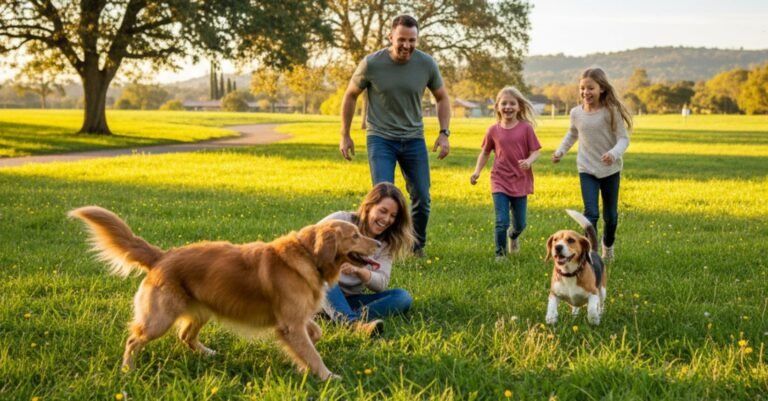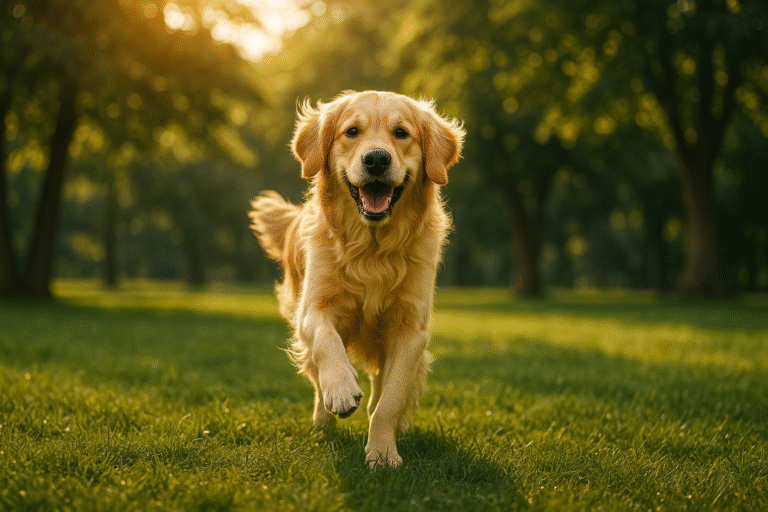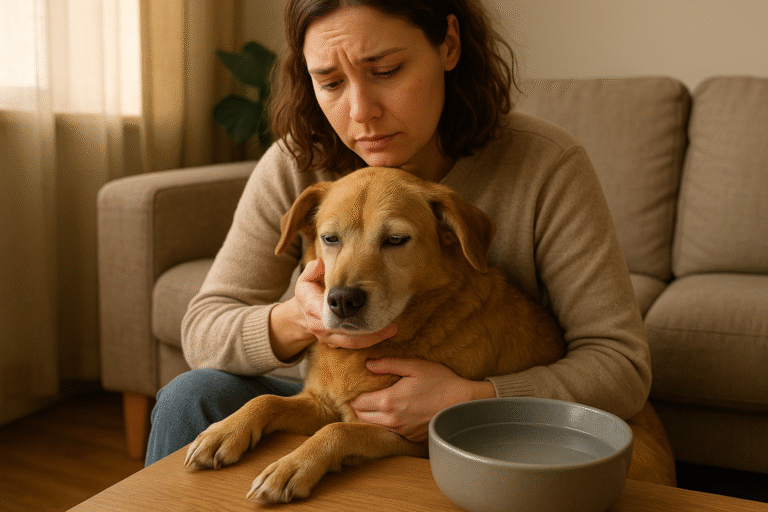
Do You Know the Early Signs of Parvovirus in Your Dog?
Canine parvovirus is a highly contagious and potentially fatal viral disease that primarily affects puppies and unvaccinated dogs. Recognizing the early signs of parvovirus in dogs can make the difference between life and death. In this comprehensive guide, we’ll explore how to spot the first warning signs, understand the disease process, and take prompt action to protect your beloved pet.
Table of Contents
ToggleWhat Is Canine Parvovirus?
Canine parvovirus (often called “parvo”) is a viral infection caused by Canine Parvovirus type 2 (CPV-2). It attacks rapidly dividing cells in a dog’s body—most notably those in the intestinal lining and bone marrow. The virus can lead to severe gastrointestinal distress and a dangerously low white blood cell count, leaving affected dogs vulnerable to secondary infections.
Key point: Puppies between six weeks and six months old are most susceptible, but any unvaccinated dog can contract parvo.
How Dogs Contract Parvovirus
Parvovirus is notoriously hardy and can survive in the environment for months. Dogs typically become infected through:
- Direct Contact: Sniffing or licking an infected dog’s bodily fluids (feces, vomit).
- Indirect Contact: Contact with contaminated objects—food bowls, leashes, floors, bedding, or soil.
- Fomites: Shoes, clothing, and human hands can transport the virus between environments.
Because parvovirus symptoms in puppies often appear suddenly, it’s crucial to practice strict hygiene and vaccination protocols.
Who Is at Risk?
- Puppies: Especially those too young to complete their vaccination series.
- Unvaccinated Adult Dogs: Dogs without up-to-date parvovirus vaccines.
- Dogs in Shelters or Breeding Kennels: Close quarters increase transmission risk.
- Older Dogs with Weakened Immune Systems: Including dogs undergoing chemotherapy or suffering from other illnesses.
Tip: Ensure your vet-recommended parvovirus vaccination schedule is strictly followed to minimize risk.

Early Symptoms of Canine Parvovirus
Identifying the early symptoms of canine parvovirus can save your dog’s life. Let’s break down the most common warning signs:
Lethargy and Weakness
One of the first indicators is a noticeable drop in energy. Your normally playful pup may:
- Reluctantly rise from rest
- Spend more time sleeping
- Seem uninterested in toys or playtime
This profound lethargy stems from the virus’s assault on the intestinal lining and subsequent nutrient malabsorption.
Loss of Appetite
Followed closely by lethargy is a decreased desire to eat or drink. Puppies may:
- Refuse favorite treats
- Sniff at their bowl and walk away
- Show signs of nausea such as lip-licking
Ignoring this symptom can lead to rapid weight loss and further weaken the immune response.
Vomiting in Puppies (Parvovirus)
Frequent vomiting is a hallmark early sign. Vomit may be:
- Clear or yellowish fluid
- Occasionally tinged with blood
- Accompanied by retching or dry heaving
Persistent vomiting exacerbates dehydration and electrolyte imbalance.
Dog Diarrhea Causes (Parvo)
Diarrhea from parvovirus is often profuse and foul-smelling. Characteristics include:
- Watery or semi-formed stools
- Dark red or coffee-ground coloration (digested blood)
- Sudden onset following the first bout of vomiting
This severe gastroenteritis can leave your dog unable to retain fluids or nutrients.
Dehydration
As vomiting and diarrhea continue, dehydration sets in quickly. Warning signs of dehydration include:
- Dry, tacky gums
- Sunken eyes
- Loss of skin elasticity (pinch test)
- Increased heart rate
Remember: Even mild dehydration in puppies can be life-threatening.
Recognizing Parvo in Dogs: Behavioral Changes
Beyond physical symptoms, you may notice subtle behavioral cues that signal trouble:
- Whimpering or Whining: Pain in the abdomen or general malaise.
- Restlessness: Inability to get comfortable due to cramps.
- Hunched Posture: Protecting a sore abdomen.
- Withdrawal: Hiding from family members or other pets.
These changes often precede full-blown gastrointestinal symptoms and can prompt earlier veterinary intervention.
When to See Your Veterinarian
At the first hint of these early symptoms—particularly vomiting or hemorrhagic diarrhea—contact your veterinarian immediately. Time is of the essence with parvovirus. Be prepared to provide:
- Duration and frequency of symptoms
- Recent exposure history (other dogs, kennel stays, dog parks)
- Vaccination records
- Any medications or home remedies tried
Early vet evaluation greatly improves your dog’s odds of survival.
Diagnostic Tests and Canine Parvo Detection
To confirm parvovirus, vets typically use:
- Fecal ELISA Test
- Detects parvovirus antigens in stool
- Rapid results, often within minutes
- PCR (Polymerase Chain Reaction) Test
- Highly sensitive, can detect low viral loads
- Useful in early infection or after vaccination
- Blood Work
- Complete blood count (CBC) to assess white blood cell count
- Electrolyte panels to gauge dehydration severity
Note: False negatives can occur. If clinical suspicion remains high, repeat testing or hospital admission for observation may be recommended.
Treatment Options for Parvovirus
There is no cure for the virus itself, but aggressive supportive care greatly improves outcomes. Common treatments include:
Intravenous Fluid Therapy
Restores hydration
Corrects electrolyte imbalances
Anti-nausea Medications
Maropitant (Cerenia®) or ondansetron
Broad-Spectrum Antibiotics
Prevents or treats secondary bacterial infections
Anti-diarrheal Agents
Bismuth subsalicylate under veterinary guidance
Nutritional Support
Early enteral nutrition via feeding tubes may be necessary
Treatment is typically administered in an intensive care setting for at least 3–5 days, with continuous monitoring of vital signs and blood parameters.

Parvovirus Prevention Tips
Preventing canine parvovirus is far easier than treating it. Follow these parvovirus prevention tips:
Adhere to Vaccination Schedule
Puppies: begin at 6–8 weeks, booster every 3–4 weeks until 16–20 weeks old
Adult dogs: revaccinate every 1–3 years per your vet’s recommendation
Isolate Unvaccinated Puppies
Avoid dog parks and communal areas until vaccination series is complete
Practice Good Hygiene
Disinfect bowls, leashes, and floors with a bleach solution (1:30 ratio)
Limit Exposure
Avoid contact with unknown dogs or contaminated environments
Educate Yourself About Kennel Policies
Ensure boarding facilities require up-to-date vaccines
Pro tip: Parvovirus can persist in soil for over a year. If a yard has seen an infected dog, re-sod or apply veterinary-grade disinfectants before introducing new puppies.
Canine Parvovirus Prognosis and Recovery
With prompt, appropriate care, many dogs recover fully. Factors influencing canine parvovirus prognosis include:
- Age and General Health: Younger puppies and immunocompromised dogs have a tougher battle.
- Severity at Presentation: Early treatment leads to better outcomes.
- Quality of Supportive Care: Access to round-the-clock veterinary monitoring improves survival.
Recovery often takes 1–2 weeks. During convalescence:
- Gradually reintroduce bland diets (e.g., boiled chicken and rice).
- Monitor for relapse of vomiting or diarrhea.
- Maintain strict isolation until fecal tests are negative.
Long-term complications are uncommon but can include gastrointestinal scarring or growth delays in very young pups.

Conclusion
Spotting the early signs of parvovirus in your dog is critical for timely intervention. By understanding the parvovirus symptoms in puppies, recognizing puppy parvovirus warning signs, and adhering to parvovirus prevention tips, you can protect your dog from this life-threatening disease. If you suspect parvovirus—due to lethargy, loss of appetite, persistent vomiting, or bloody diarrhea—seek veterinary care without delay. Early detection and aggressive supportive treatment offer the best chance for a full recovery.
Frequently Asked Questions (FAQs)
1. What is canine parvovirus and how does a dog contract it?
Canine parvovirus (CPV-2) is a highly contagious viral disease that attacks a dog’s rapidly dividing cells—especially in the intestines and bone marrow. Dogs contract parvo through direct contact with infected feces or vomit, or indirectly via contaminated objects (bowls, leashes, soil) and human hands or shoes.
2. What are the earliest signs of parvovirus in dogs?
Early signs of parvovirus in dogs often include sudden lethargy, loss of appetite, vomiting (sometimes with blood), and profuse, foul-smelling diarrhea. Dehydration can set in quickly, so prompt recognition of these symptoms is vital for survival.
3. How soon after exposure do parvo symptoms appear?
Symptoms typically emerge 3–7 days after exposure to the virus. However, this incubation period can vary slightly based on the dog’s age, immune status, and viral load at the time of infection.
4. Can adult dogs get parvovirus?
Yes. While puppies are most vulnerable, any unvaccinated dog—regardless of age—can contract parvovirus. Adult dogs with weakened immune systems (e.g., due to illness or stress) are also at elevated risk.
5. How is parvovirus diagnosed by a vet?
Veterinarians commonly use a rapid fecal ELISA test to detect parvovirus antigens in stool. In cases of early infection or prior vaccination, a more sensitive PCR test may be ordered. Blood work (CBC and electrolyte panels) helps assess dehydration and white blood cell counts.
6. What treatment options are available for parvovirus?
There is no direct antiviral cure for parvo. Treatment focuses on aggressive supportive care: intravenous fluids for dehydration, anti-nausea medications, broad-spectrum antibiotics to prevent secondary infections, and nutritional support—often via feeding tubes.
7. How long does it take for a dog to recover from parvovirus?
With prompt veterinary care, many dogs begin to improve within 3–5 days of intensive treatment. Full recovery—including return to normal diet and activity—usually takes 1–2 weeks, depending on the severity of initial symptoms.
8. Can vaccinated dogs still get parvovirus?
Vaccinated dogs have a significantly lower risk of contracting parvo. However, incomplete vaccination series or improper vaccine storage/administration can leave gaps in immunity. Booster shots according to your vet’s schedule are essential.
9. How can I prevent my puppy from getting parvovirus?
Follow your veterinarian’s vaccination schedule strictly—starting at 6–8 weeks, with boosters every 3–4 weeks until at least 16–20 weeks of age. Practice good hygiene: disinfect bowls and floors with a 1:30 bleach solution, and avoid dog parks or communal areas until vaccinations are complete.
10. Is parvovirus contagious to humans?
No. Canine parvovirus does not infect humans. However, humans can act as mechanical carriers, spreading the virus via contaminated hands, clothing, or shoes. Always wash thoroughly after handling an infected dog or cleaning up waste.
Recent Posts









Related Topics
Copyright © 2025 The Pet Blog – Expert Tips, Care Guides & Fun Facts for Every Pet Lover.

